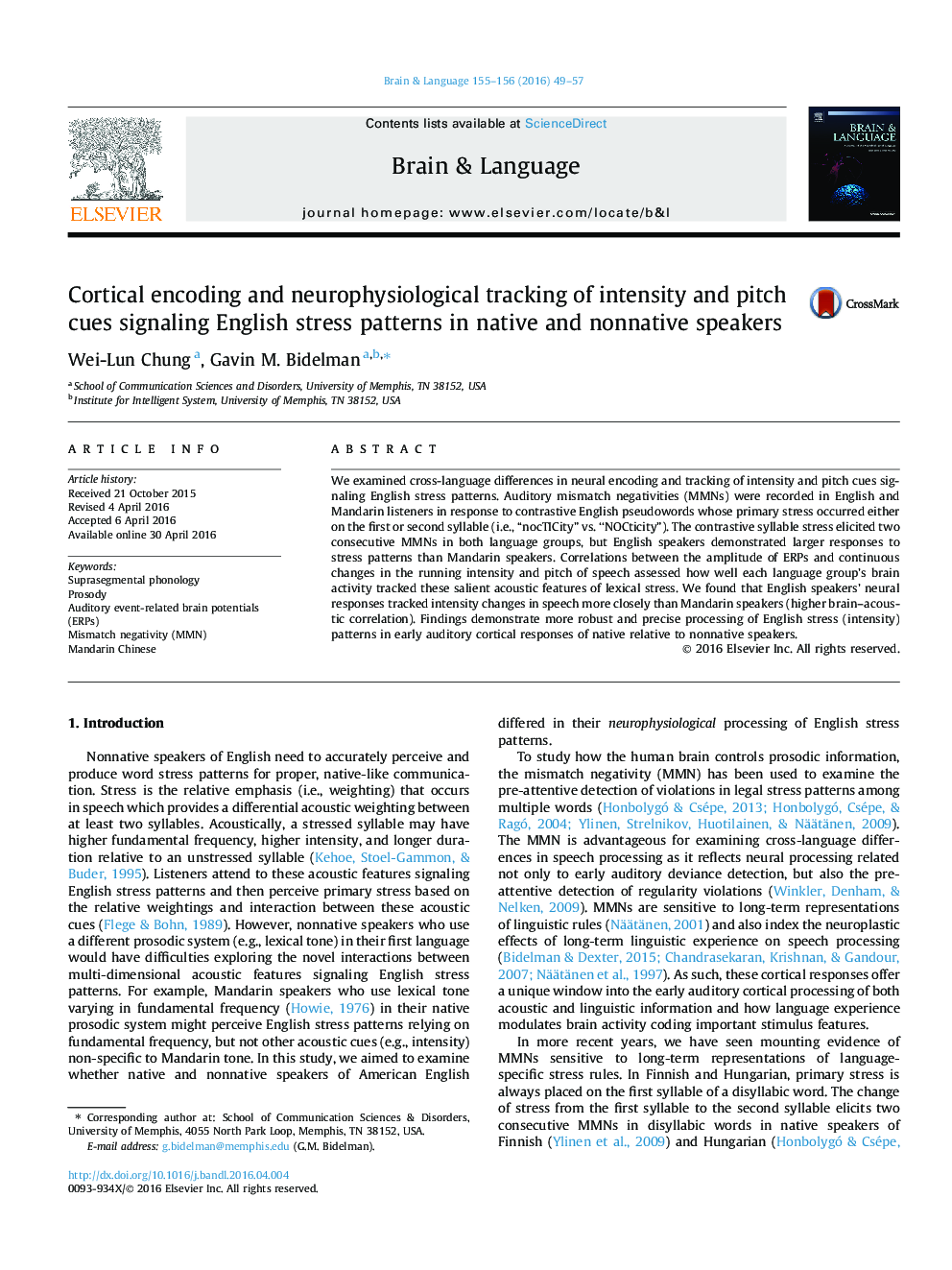| Article ID | Journal | Published Year | Pages | File Type |
|---|---|---|---|---|
| 925254 | Brain and Language | 2016 | 9 Pages |
•Examined cross-language difference in neural coding for English stress patterns.•Double MMN was elicited by a change in primary stress placement across syllables.•English > Mandarin: amplitudes of double MMN and the P2 component.•ERP amplitudes were correlated to ongoing intensity and pitch variations in stimuli.•English > Mandarin: neural tracking of intensity variations.
We examined cross-language differences in neural encoding and tracking of intensity and pitch cues signaling English stress patterns. Auditory mismatch negativities (MMNs) were recorded in English and Mandarin listeners in response to contrastive English pseudowords whose primary stress occurred either on the first or second syllable (i.e., “nocTICity” vs. “NOCticity”). The contrastive syllable stress elicited two consecutive MMNs in both language groups, but English speakers demonstrated larger responses to stress patterns than Mandarin speakers. Correlations between the amplitude of ERPs and continuous changes in the running intensity and pitch of speech assessed how well each language group’s brain activity tracked these salient acoustic features of lexical stress. We found that English speakers’ neural responses tracked intensity changes in speech more closely than Mandarin speakers (higher brain–acoustic correlation). Findings demonstrate more robust and precise processing of English stress (intensity) patterns in early auditory cortical responses of native relative to nonnative speakers.
